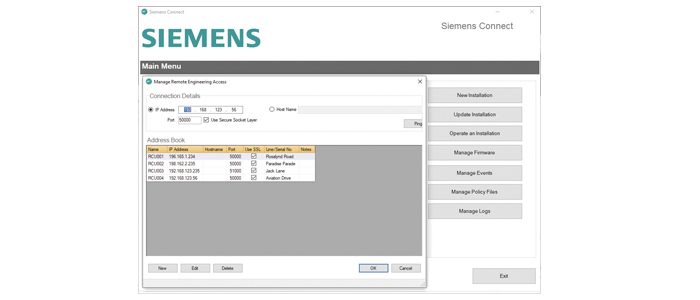- +61 7 3374 2877
- Email Us
Remote Engineering Access (REA) allows authorised utility personnel to connect to remote field devices over a secure communications network. Using the same PC tools as for local connection, REA provides protection and control engineers and planners with the capability for accessing the data they require without needing to visit the devices.
Historically, fault finding in distribution networks was time-consuming and expensive. After a permanent network fault or equipment failure, distribution operator fault finding teams would travel from the depot to the faulted line and investigate the location of a fault. In some cases, the time spent in the field looking for faults could be several hours. The feeder would be out of service throughout this investigation, causing the network operator to be exposed to customer outage penalties in addition to the operating costs of sending the fault-finding teams into the field. This also has a negative impact on reliability performance indices, such as SAIDI.

Access Devices Remotely
It is an advantage to be able to access devices remotely for purposes other than supervisory control and data acquisition (SCADA), particularly as modern overhead switchgear and communication devices support remote access to the detailed information gathered by these devices. It makes sense to leverage these capabilities to reduce the costs traditionally associated with the deployment of teams to locate faults and update the equipment. Settings changes and event log downloads can be made in minutes and firmware updates deployed with ease. This compares with sending a field crew to site which could cost up to several hours in travel.
The Control Centre needs to maintain situational awareness when an engineer is accessing a device via REA. Ensuring the SCADA channel remains open in parallel with remote engineering access allows the Control Centre to maintain its awareness of the device state and line conditions.
Battery backup is vital for effective Remote Engineering Access. If the intelligent electrical device (IED) is not powered, then remote access isn’t possible. While also powering fault passage indication to further reduce outage duration, battery backup increases operator safety during restoration by ensuring protection is always running and supporting functionality such as delayed closing.